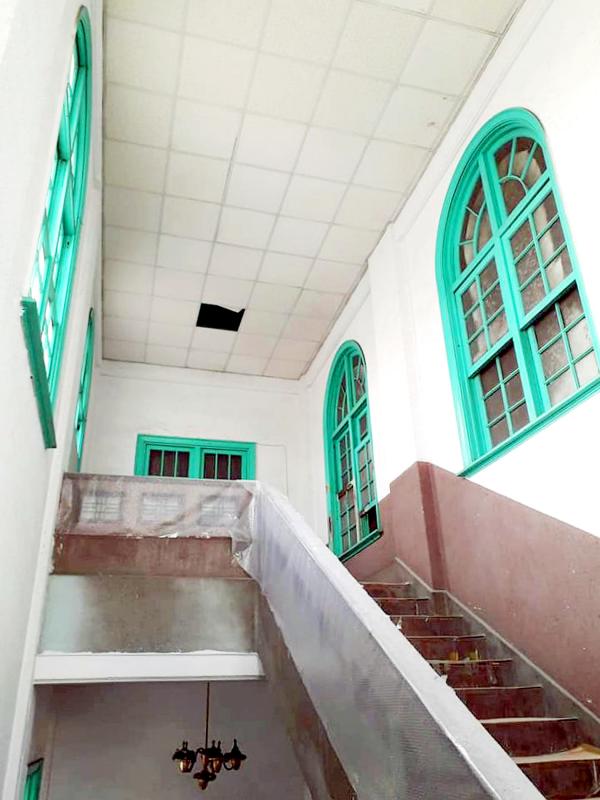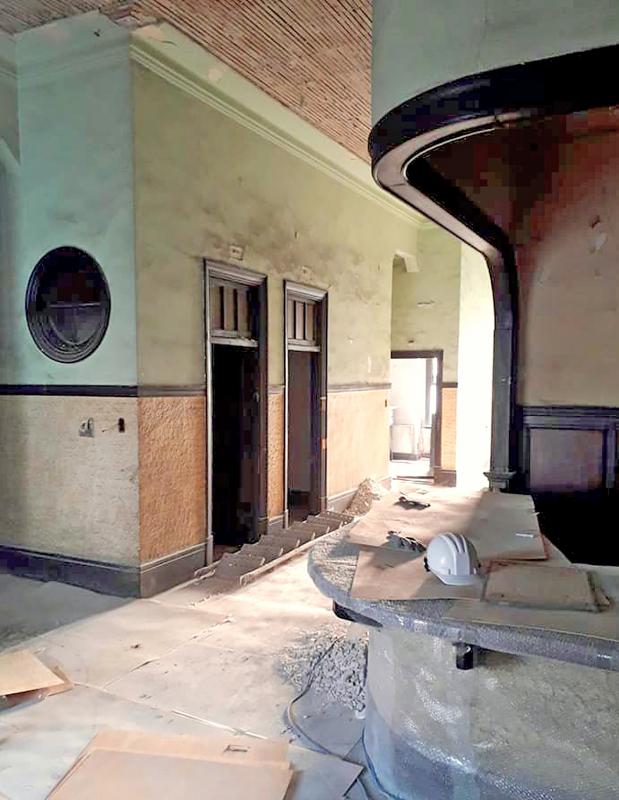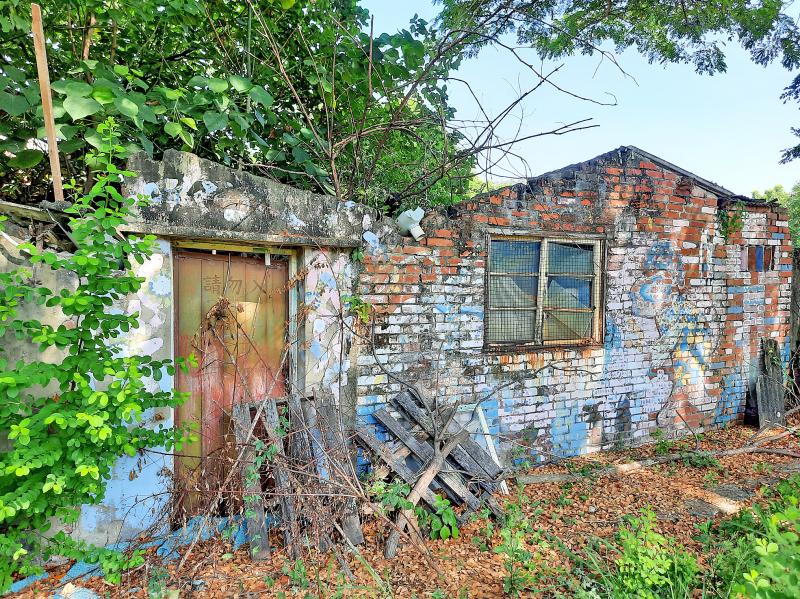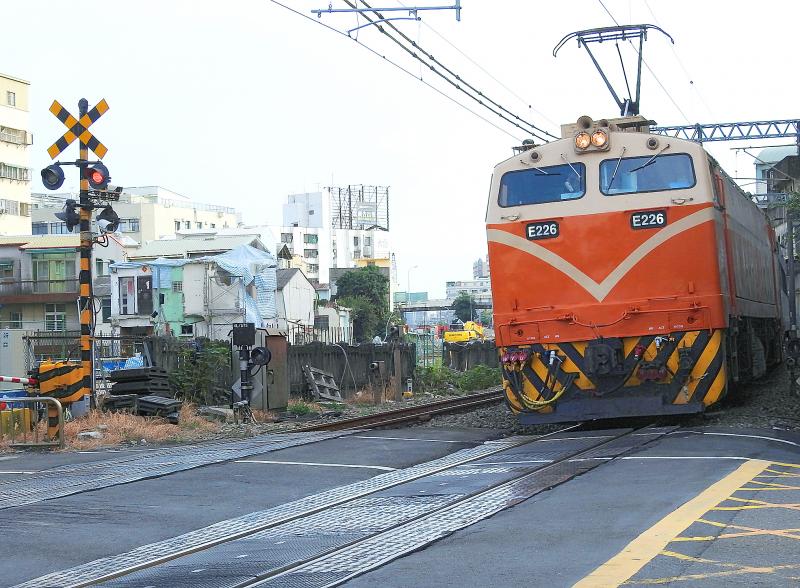There are certain places around the world where a railroad and the trains it carries actually enhance the landscape. It’s hard to make that argument in downtown Tainan — yet some residents of Taiwan’s former capital say they’ll miss the trains after 2024.
By the end of that year, if all goes to plan, Tainan’s ambitious undergrounding project should be sufficiently far along for rail traffic to switch to a new set of tracks, just east of the current railway and several meters below street level. The Tainan City Government is meeting 12.5 percent of the total cost, estimated at NT$29.36 billion.
The section of the Taiwan Railway Administration’s (TRA) historic main line that’s being rebuilt by cut-and-cover tunneling is 8.23km long. It stretches from just south of Daqiao Railway Station (大橋火車站) in Yongkang District (永康) to near National University of Tainan’s Rongyu Campus (國立臺南大學榮譽校區).

Photo: Wang Chun-chung, Taipei Times
By comparison, the newish underground rail line in central Kaohsiung uses a 9.75-km-long tunnel. In Taipei and New Taipei City, 22.33km of line between Fuzhou Railway Station (浮洲火車站) and Xike Railway Station (汐科火車站) were placed below the streets between 1983 and 2011.
In Taichung, reconstruction went in the opposite direction. Nowadays, trains zip through the core of central Taiwan’s largest city on a 21.7-km-long elevated railroad.
Elevated railways are a good bit cheaper to build than tunnels, but they don’t free up nearly so much land. Both approaches, however, eliminate underpasses (which are prone to flooding) and level crossings (where road traffic is forced to wait every time a train comes along, and which sometimes are the site of gruesome train-vehicle collisions).

Photo: Steven Crook
In Tainan, of the nine level crossings due to disappear, the busiest are those on Cingnian Road (青年路) and Dongfeng Road (東豐路). Some of the eight underpasses slated for demolition have already been closed to vehicle or pedestrian traffic, to allow the new railroad to be built.
The northern part of Changrong Road (長榮路) used to go under the railway. Now, a temporary bridge takes it over both the tracks and the adjacent construction site.
Half a kilometer south of that bridge, I found what could well be the best spot in the city to take photos of trains as they rumble along the soon-to-disappear ground-level tracks. It didn’t surprise me that I wasn’t the only trainspotter there.

Photo: Steven Crook
From the pedestrian/bicycle bridge that connects Lane 73 of Kaiyuan Road (開元路) on the east side of the tracks with Hewei Road Section 1 (和緯路一段) on the western side, it’s possible to see a good distance up and down the tracks — and appreciate the deep trench that’s been dug, and which is now partly covered by concrete panels and steel.
As I waited on the bridge for a train to approach, Arthur introduced himself to me. A retired teacher who’d spent his entire career in Kaohsiung, and who still lived there, Arthur said he’d grown up not far away. While attending senior high school, he told me, he rode a bike every day, using the same level crossing in the morning and again in the afternoon. If he had to wait for a train, he said, he didn’t resent the delay. Instead, it was a rare opportunity to daydream, and to wonder where the people on the train were headed, and why they were traveling.
Arthur said that when he heard about the undergrounding project, he began to think about the frequency with which he’d seen trains in his teenage years. Since then, he’s taken a few train journeys out of nostalgia, and he combines visits to relatives in his hometown with photography at different locations along the railway line.

Photo: Steven Crook
PROTESTS AND RENOVATIONS
For years, houses near the Cingnian Road level crossing were draped in protest banners that complained about the government’s land-expropriation policies.
Between September 2009, when the eastward shift was given final approved by the Executive Yuan, and September 2018, the authorities managed to win over about three quarters of the 300-plus affected households. The holdouts generated a great deal of noise, but it seems their criticisms didn’t seriously harm the political reputation of William Lai (賴清德), Tainan’s mayor from 2010 to 2017, and now vice-president.

Photo: Steven Crook
The initial reconstruction plan called for the demolition of Tainan’s historic main station, which was inaugurated in 1936.
Even though the structure isn’t nearly so attractive as the old station buildings in Taichung or Hsinchu, urban-heritage aficionados were outraged. Accordingly, the plan was revised to allow for the building’s preservation and renovation — and I got a close if unplanned look at restoration efforts one morning in the spring of 2018.
Arriving at the station to board a southbound train, I spotted an open doorway that led to a staircase. I’d never known the second floor to be open to the public, so without asking for permission I headed through it and up the stairs.

Photo: Steven Crook
I’d heard there used to be a hotel on the second floor. (I’ve since learned that it went out of business in 1965; the restaurant there operated until 1986.) Wandering around, it was easy to identify what had once been the lobby, and which rooms were likely former guestrooms.
At the time of my visit, there was a good amount of debris on the floor. Looking at the pieces of wood and the crumbling plaster, it was hard to tell what had been stripped so work could proceed, and what had rotted and collapsed.
Since then, I’ve not been able to go upstairs to check on progress. If it’s like other government-funded renovations, it’ll take years and cost a lot — but eventually look splendid.
Also under renovation is South Tainan Railway Station (南臺南火車站), a Japanese-style brick structure not far from Barclay Memorial Park (巴克禮紀念公園). After being mothballed for nearly four decades, it’ll be revived as an operational commuter station, hopefully before the end of 2026.
Between Tainan’s main station and South Tainan Railway Station, a brand new station is under construction. Linsen Railway Station (林森火車站), which gets its name from nearby Linsen Road (林森路), is also expected to be ready in late 2026.
Supporters of undergrounding say land values will soar and surging tax revenues will fill the city government’s coffers. However, I’ve been alive long enough to know that big-ticket infrastructure projects often fail to deliver the benefits promised by politicians.
Tainan urgently needs better public transportation, but I worry that the reopening of South Tainan Station will result in a slew of real-estate developments on the large fields that surround the head office of Taiwan Sugar Corporation’s (台糖, TSC), less than 1km from the station.
For countless residents, this ex-plantation is a favorite place to jog or walk their dogs. Railway reconstruction is supposed to improve Tainan’s environment. Let’s hope the price of the project doesn’t include one of the city’s biggest green spaces.
Steven Crook has been writing about travel, culture and business in Taiwan since 1996. He is the author of Taiwan: The Bradt Travel Guide and co-author of A Culinary History of Taipei: Beyond Pork and Ponlai.

US President Donald Trump may have hoped for an impromptu talk with his old friend Kim Jong-un during a recent trip to Asia, but analysts say the increasingly emboldened North Korean despot had few good reasons to join the photo-op. Trump sent repeated overtures to Kim during his barnstorming tour of Asia, saying he was “100 percent” open to a meeting and even bucking decades of US policy by conceding that North Korea was “sort of a nuclear power.” But Pyongyang kept mum on the invitation, instead firing off missiles and sending its foreign minister to Russia and Belarus, with whom it

When Taiwan was battered by storms this summer, the only crumb of comfort I could take was knowing that some advice I’d drafted several weeks earlier had been correct. Regarding the Southern Cross-Island Highway (南橫公路), a spectacular high-elevation route connecting Taiwan’s southwest with the country’s southeast, I’d written: “The precarious existence of this road cannot be overstated; those hoping to drive or ride all the way across should have a backup plan.” As this article was going to press, the middle section of the highway, between Meishankou (梅山口) in Kaohsiung and Siangyang (向陽) in Taitung County, was still closed to outsiders

Many people noticed the flood of pro-China propaganda across a number of venues in recent weeks that looks like a coordinated assault on US Taiwan policy. It does look like an effort intended to influence the US before the meeting between US President Donald Trump and Chinese dictator Xi Jinping (習近平) over the weekend. Jennifer Kavanagh’s piece in the New York Times in September appears to be the opening strike of the current campaign. She followed up last week in the Lowy Interpreter, blaming the US for causing the PRC to escalate in the Philippines and Taiwan, saying that as

The Chinese Communist Party (CCP) has a dystopian, radical and dangerous conception of itself. Few are aware of this very fundamental difference between how they view power and how the rest of the world does. Even those of us who have lived in China sometimes fall back into the trap of viewing it through the lens of the power relationships common throughout the rest of the world, instead of understanding the CCP as it conceives of itself. Broadly speaking, the concepts of the people, race, culture, civilization, nation, government and religion are separate, though often overlapping and intertwined. A government